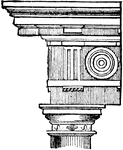
Doric Order
One of the three orders or organizational systems of Ancient Greek or classical architecture.
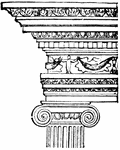
Ionic Order
One of the three orders of classical architecture. It originated in the mid-6th century BC.
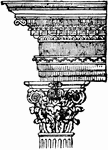
Corinthian Order
One of the three orders of classical architecture. It was said to have been invented by an architect,…
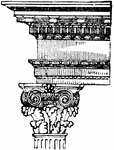
Composite Order
A mised order, combining the volutes of the Ionic order with the leaves of the Corinthian order.

Male Pilgrim
A traveler, specifically one who journeys to some place esteemed sacred, either as a penance or in order…

Dry Dock
Dry docks are two kinds, the stationary dock and the floating dock. They are used in order to get at…
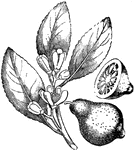
Lemon
The fruit of a small tree belonging to the same natural order as the orange. There are numerous varieties…
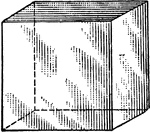
Cube
"Science has succeeded in classifying the thousands of known crystals in six systems, to each of which…
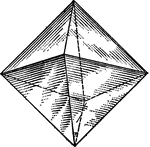
Regular Octahedron
"Science has succeeded in classifying the thousands of known crystals in six systems, to each of which…
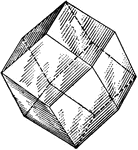
Rhombic Dodecahedron
"Science has succeeded in classifying the thousands of known crystals in six systems, to each of which…
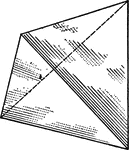
Regular Tetrahedron
"Science has succeeded in classifying the thousands of known crystals in six systems, to each of which…

First Right Square Prism
"Science has succeeded in classifying the thousands of known crystals in six systems, to each of which…

Second Right Square Prism
"Science has succeeded in classifying the thousands of known crystals in six systems, to each of which…

First Right Square Octahedron
"Science has succeeded in classifying the thousands of known crystals in six systems, to each of which…
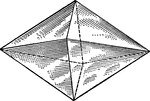
Second Right Square Octahedron
"Science has succeeded in classifying the thousands of known crystals in six systems, to each of which…
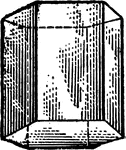
Hexagonal Prism
"Science has succeeded in classifying the thousands of known crystals in six systems, to each of which…

Six-sided Pyramid
"Science has succeeded in classifying the thousands of known crystals in six systems, to each of which…
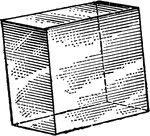
Rhombohedron
"Science has succeeded in classifying the thousands of known crystals in six systems, to each of which…

Magnified Louse
"A genus of insects, the type of a very numerous family, which forms the order Parasita or Auoplura.…
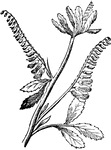
Melilot
"A genus of clover-like plants of the natural order Leguminosae, with ternate leaves, differing from…

Mistletoe
"A genus of small parasitical shrubs of the natural order Loranthaceae. This order is exogenous, and…

Papaw Tree
"A South American tree of the natural order Papayaceae of which order about 30 species are known which…

Passionflower
"A genus of plants almost exclusively native to the warm parts of America, and belonging to the natural…
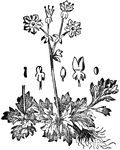
Saxifrage
"A genus of plants of the natural order Saxifrangeae. This order has a calyx, usually of five sepals…

Kneading Machine
"A form of dough-making machine in common use. It consists of a trough or box, the lower portion of…

Dannebrog
"The cross of the Danisn order of the Dannebrog, a white cross surmounting a red one, with the royal…

Slider of Kelvin Ampere Balance
"The upper edge of the shelf on which the weights slide is graduated into equal divisions, and the weight…

Queenfish
It is a food fish of good quality, but too small to be of much economic importance, reaching a length…

Heath
"Erica cinerea. The English form of a name given in most Teutonic dialects to the common ling or heather,…

Heath
"Calluna Vulgaris. The English form of a name given in most Teutonic dialects to the common ling or…
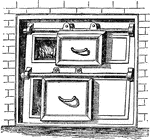
Furnace Doors
"Sylvester's furnace doors or doors of similar form are preferable to the ordinary hinged doors, because…

Rhizostomae
"In the sub-order Rhizostomae the edges of the oral opening use together at an early age and leave several…

Chrysaora
"In the sub-order Rhizostomae the edges of the oral opening use together at an early age and leave several…

Agrimony
"A genus of plants of the natural order rosacae, sub-order Potentilleae. The calyx is five-cleft, without…

Alcantara
"One of the religious orders of Spanish knighthood, was founded as a military fraternity for the defense…
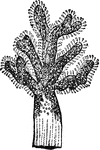
Alcyonium
"A genus of Zoophytes, the type of family called Alcyonide, belonging to the class anthozoa, and order…

Alcyonium
"A genus of Zoophytes, the type of family called Alcyonide, belonging to the class anthozoa, and order…

Alcyonium Digitatum
"A genus of Zoophytes, the type of family called Alcyonide, belonging to the class anthozoa, and order…
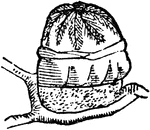
Alcyonium Digitatum
"A genus of Zoophytes, the type of family called Alcyonide, belonging to the class anthozoa, and order…
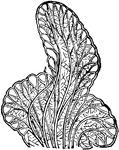
Alcyonium Digitatum
"A genus of Zoophytes, the type of family called Alcyonide, belonging to the class anthozoa, and order…
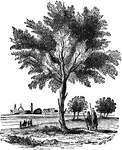
Almond Tree
"A genus of the natural orer Rosaceae, sub-order Amygdaleae or Drupaceae, consisting of trees or shrubs,…

Amaranth
"A genus of plants of the natural order Amaranthaceae. This order contains nearly 300 known species,…

Anacharis
"A genus of plants of the natural order Hydrocharideae, of which a species A. Canadensis has recently…

Andromeda
"A genus of Andromeda polifolia of plants of the natural order Ericaceae, distinguished by a 5-valve…
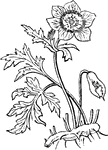
Anemone Coronaria
"A genus of plants of the natural order Ranunculaceae, having an involucre of three divided leaves,…

Angelica
"A genus of plants of the natural order Umbelliferae, by some botanists divided into two: A., and Archangelica.…

Order of the Annunciation
"The religious Order of the Heavenly Annunciation, or of the Nuns of the Annunciation of Mary, was instituted…

Arachis
"A genus of plants of the natural order Leguminosae, sub-order Papilionaceae, natives of the warm parts…

Arbor Vitae
"A genus of plants of the natural order Coniferae, allied to the cypress, and consisting of evergreen…

Aristolochia
"A genus of plants of the natural order Aristolochiaceae. This order, which is dicotyledonous or exogenous,…
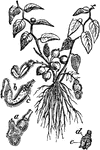
Aristolochia
"A genus of plants of the natural order Aristolochiaceae. This order, which is dicotyledonous or exogenous,…

Arnica Montana
"A genus of plants belonging to the natural order compositae, sub-order Corymbiferae. The flowers of…

Arracacha
"A plant of the natural order Umbelliefrae, a native of the elevated table-lands in the neighborhood…
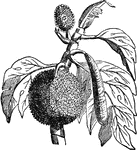
Bread-fruit
"Artocarpaceae, a natural order of Dicotyledonous plants, of which the Bread-fruit is the type; very…
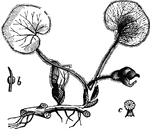
Asarabacca
"A plant of the natural order Aristolochiaceae, a native of Europe, growing in woods; rare, and perhaps…
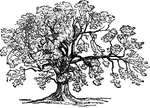
Common Ash
"A genus of trees belonging to the natural order Oleaceae, and distinguished by very imperfect flowers,…

Astragalus
"A genus of plans of the natural order Leguminosae, sub-order Papilionaceae. The pod is more or less…
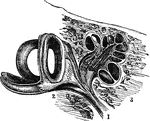
Auditory Nerve
"By anatomists, the auditory nerve is associated with the facial, and is the seventh in order of origin…

